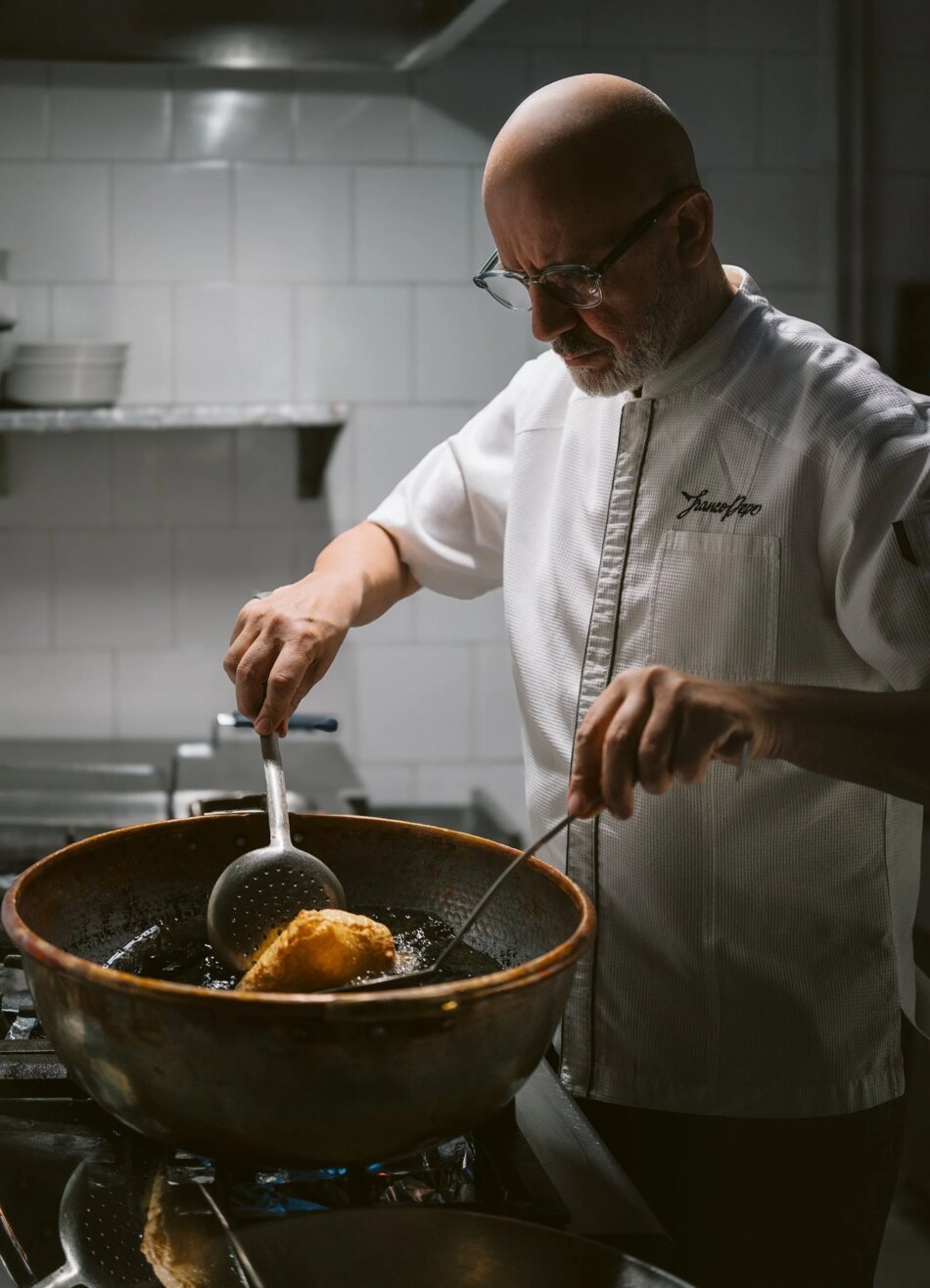Few have mastered the art of pizza-making quite like Franco Pepe. Born into a family of bakers, Franco initially learned his craft from his grandparents and parents, inspired by their work ethic and their passion for pizza. Yet when he took over his father’s restaurant with his siblings following his father’s death, he knew that he wanted to elevate this most humble of foodstuffs to a whole new level, marrying family tradition with innovation in an attempt to put pizza on the global culinary map.
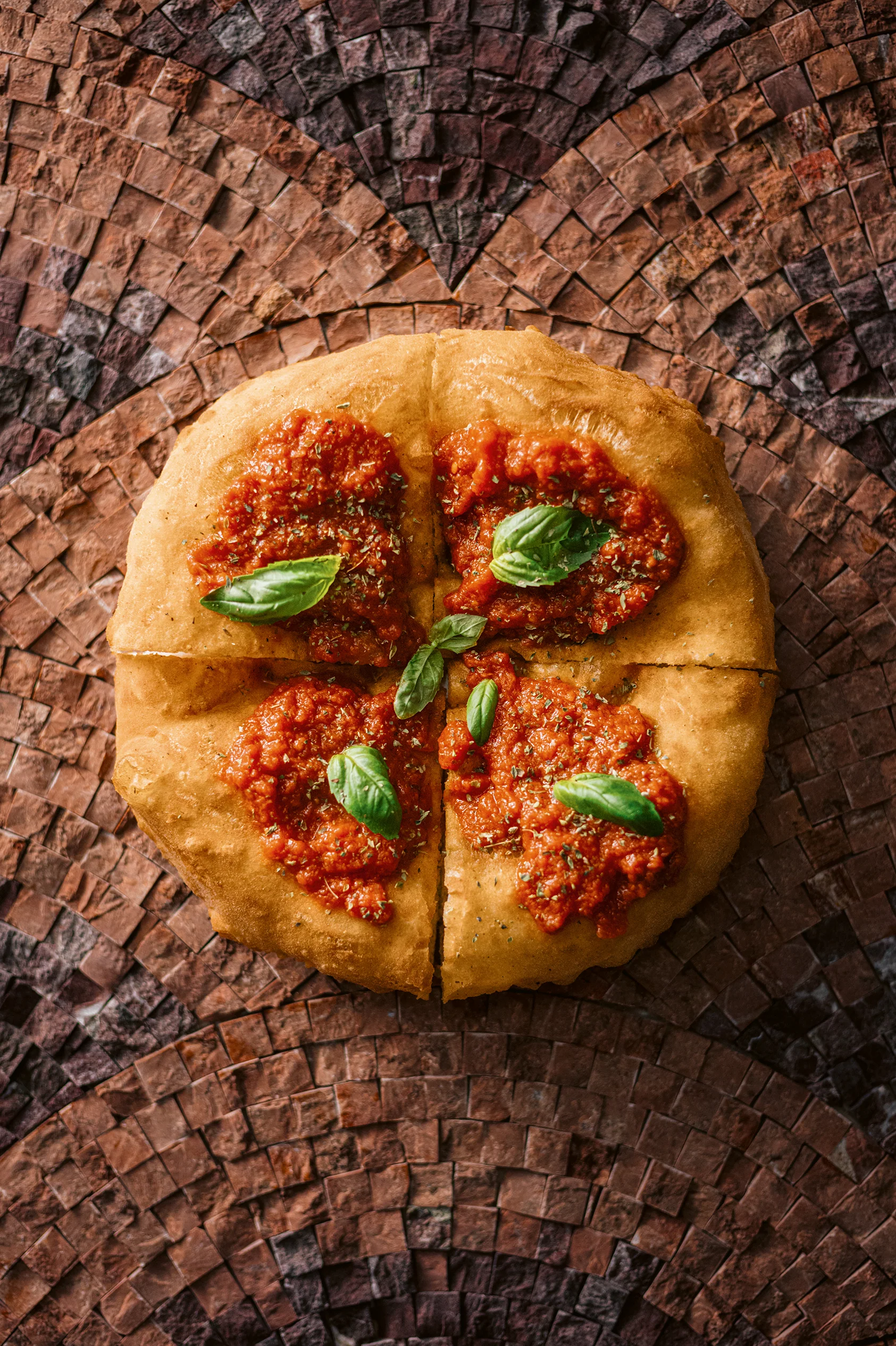 Montanara. Photography: Adam Bricker and Brian McGinn
Montanara. Photography: Adam Bricker and Brian McGinn
Taking inspiration from traditional pizzas and dedicating himself to relentless experimentation with ancient flour blends and fermentation methods, in 2012 Franco finally founded Pepe in Grani, located in Caiazzo, near Naples, not that far from his grandfather’s original bakery.
The pizzeria quickly gained worldwide recognition, not least thanks to Netflix’s documentary series Chef’s Table, which featured Franco and the restaurant in its pizza special. Pepe in Grani was the first pizzeria to be included as a ‘50 Best Discovery’ by the World’s 50 Best Restaurants, and one of his pizzas featured on the cover of The Modernist Cuisine pizza volumes.
As a result, the pizzeria is now a much-sought-after dining experience for pizza enthusiasts, culinary critics, and chefs from across the globe.
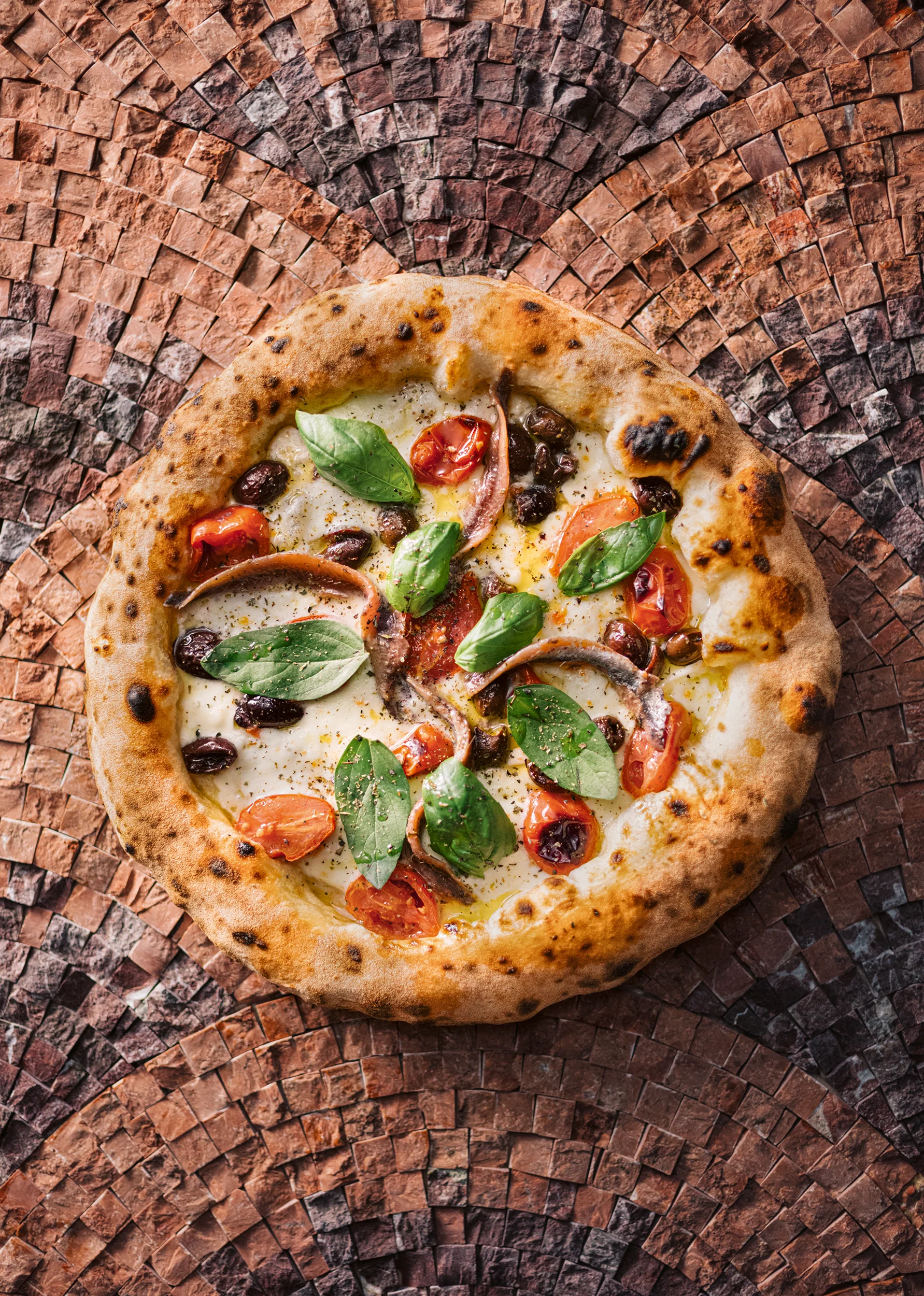 Il Sole nel Piatto. Photography: Adam Bricker and Brian McGinn
Il Sole nel Piatto. Photography: Adam Bricker and Brian McGinn
Our new book, Franco Pepe: Pizza Chef, invites readers into Franco’s world, detailing his personal story, his philosophy, his recipes, and the birth of his now legendary restaurant. Co-authored by food writer Elisia Menduni,
Franco Pepe: Pizza Chef is much more than just a cookbook. Packed with rich storytelling, behind-the-scenes insights, and Pepe’s pizza recipes, it uncovers the secrets of Franco Pepe’s artistry, detailing the ideas and influences behind his dough recipe, and his close relationships with his local suppliers.
One of the most important pillars on which the Pepe in Grani project is based, in addition to quality, the dining format, and the team, is its strong ongoing awareness of health. From the very beginning, Franco Pepe included an agronomist, Vincenzo Coppola, and a nutritionist, Michelina Petrazzuoli, in his team.
“I needed to have science by my side, because as well as making a great pizza purely for its deliciousness, I also wanted to make the perfect pizza from the point of view of health and environmental issues,” explains Franco.
As a result of the research carried out with Petrazzuoli, it soon became clear that, thanks to fundamental attention to the ingredients (which were all as untreated and natural as possible), the cooking and temperatures (not too high), and, above all, the combinations and quantities of ingredients, it was possible to offer the public a healthier pizza, the consumption of which was no longer “rule-breaking,” but could actually be regarded as a positive dietary habit.
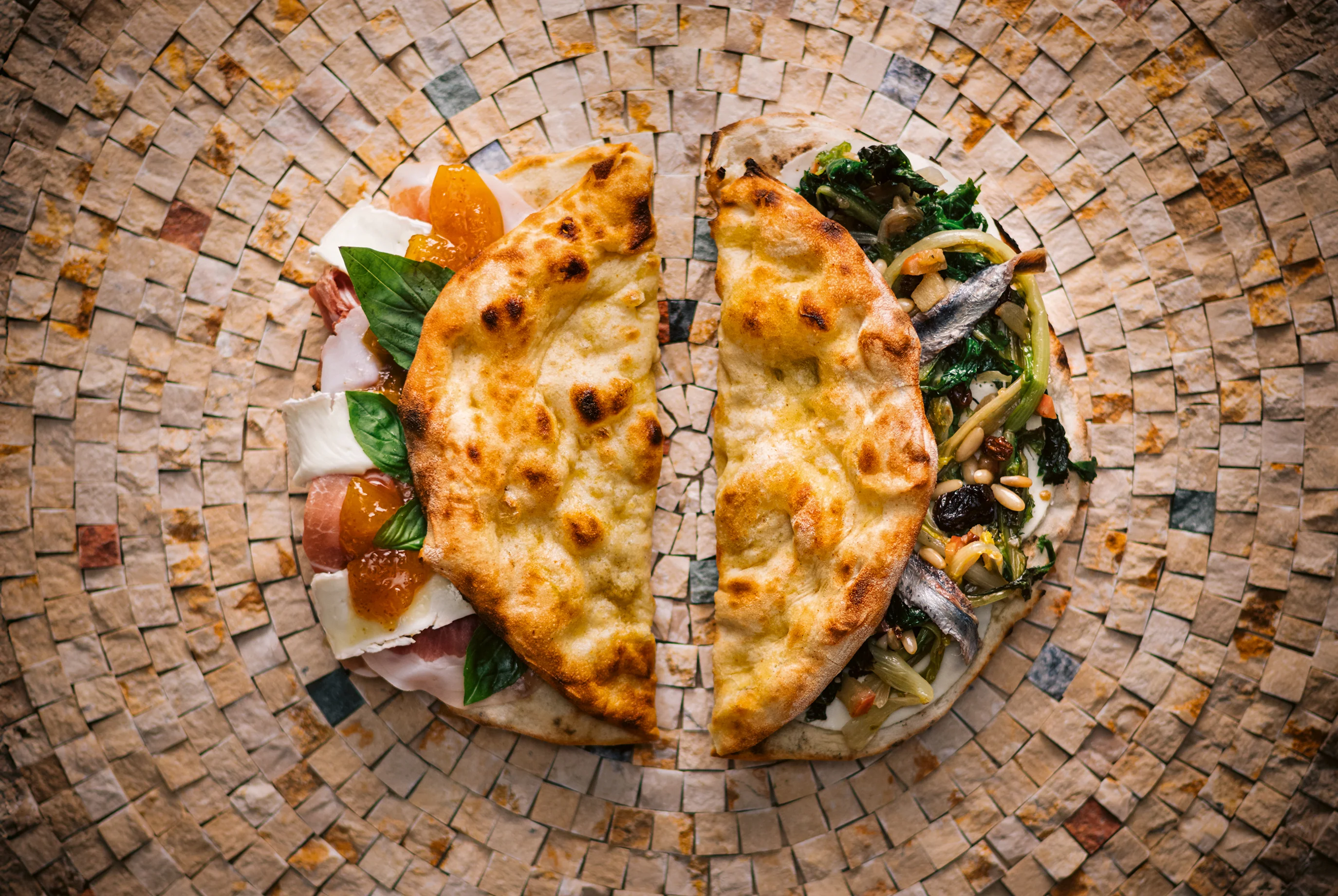
Pitta Fabula. Photography: Adam Bricker and Brian McGinn
This research led to the creation of a section of the Pepe in Grani menu dedicated purely to “Mediterranean pizza,” comprising slightly smaller pizzas (7oz / 200g instead of 9oz / 250g) accompanied by raw vegetables (wild chicory, chard, borage, “artichoke thistles,” wild arugula [rocket], and torzella cabbage), and a dressing in which to dunk the crust.
This is a healthy menu based on the idea of a pizza achieving the right balance of macronutrients (carbohydrates, proteins, and fats), combined with sauces and vegetables, guaranteeing the ideal caloric intake of 55–60 percent carbohydrates, 15–20 percent proteins, and 25–30 percent fats, according to the food pyramid of the classic Mediterranean diet.
Since then, the menu at Pepe in Grani has always included a selection of pizzas accompanied by raw vegetables. These increase the fiber content of the dish, balance the glycemic load of the meal, speed up digestion, and balance the assimilation and elimination of fats.
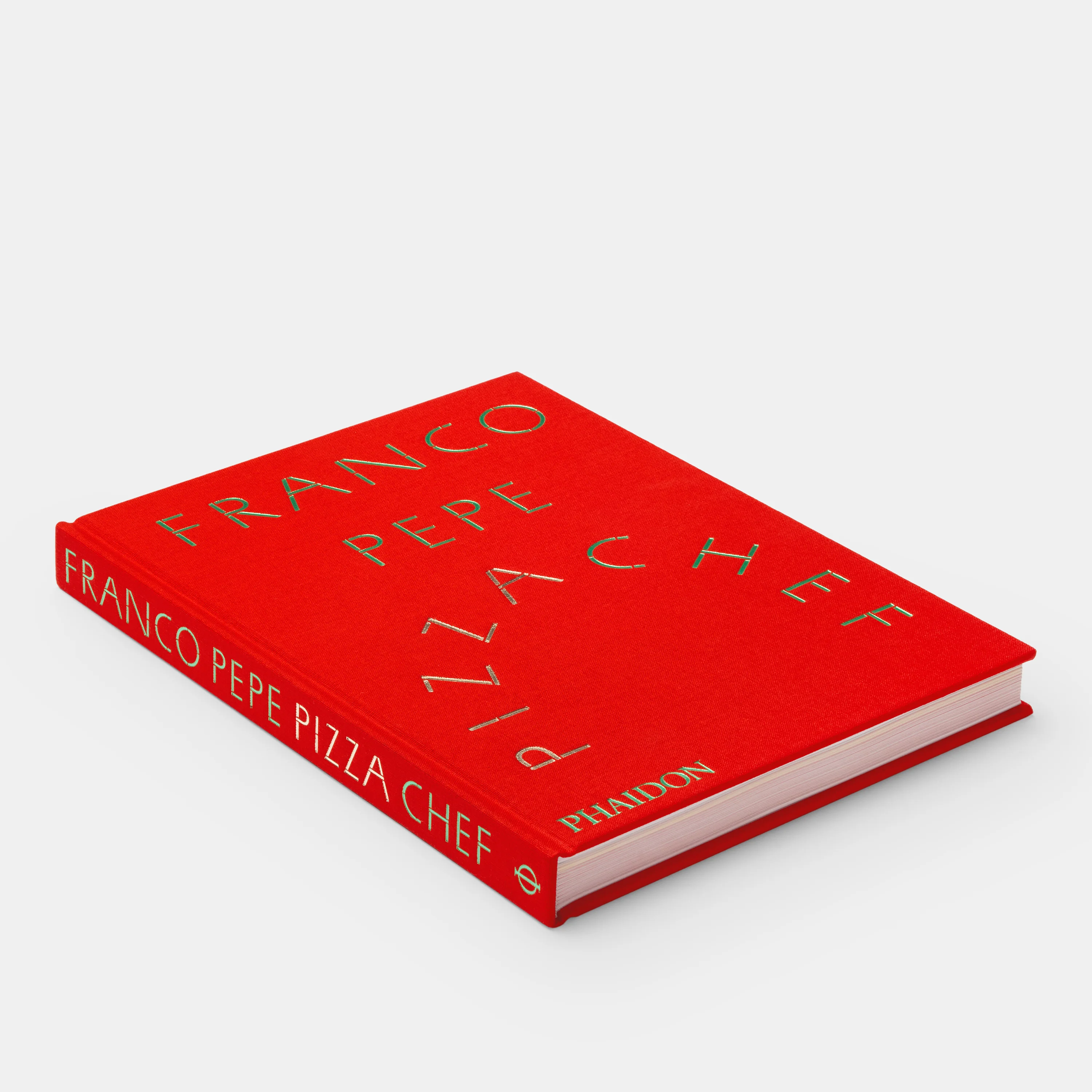
You can learn more by buying
Franco Pepe: Pizza Chef. Meanwhile, here’s a relatively simple pizza recipe, Memento, from it (though, for the purposes of quickly getting you started, using store bought dough). This garden vegetable pizza is a tribute to the Caiazzo region and to healthy eating. It is vegan – containing only wheat, legumes, and vegetables—showing that pizza can also be completely plant-based. Instead of cheese, chickpea cream adds mellowness, while raw chicory adds a bitter, pungent, and grassy contrast to the palate. Onion restores sweetness and balance, as well as adding crunch in fried form.
“We must never forget where we come from and what makes our land so special. That’s why I wanted to call this pizza Memento: so I never forget where my roots are,” says Franco.
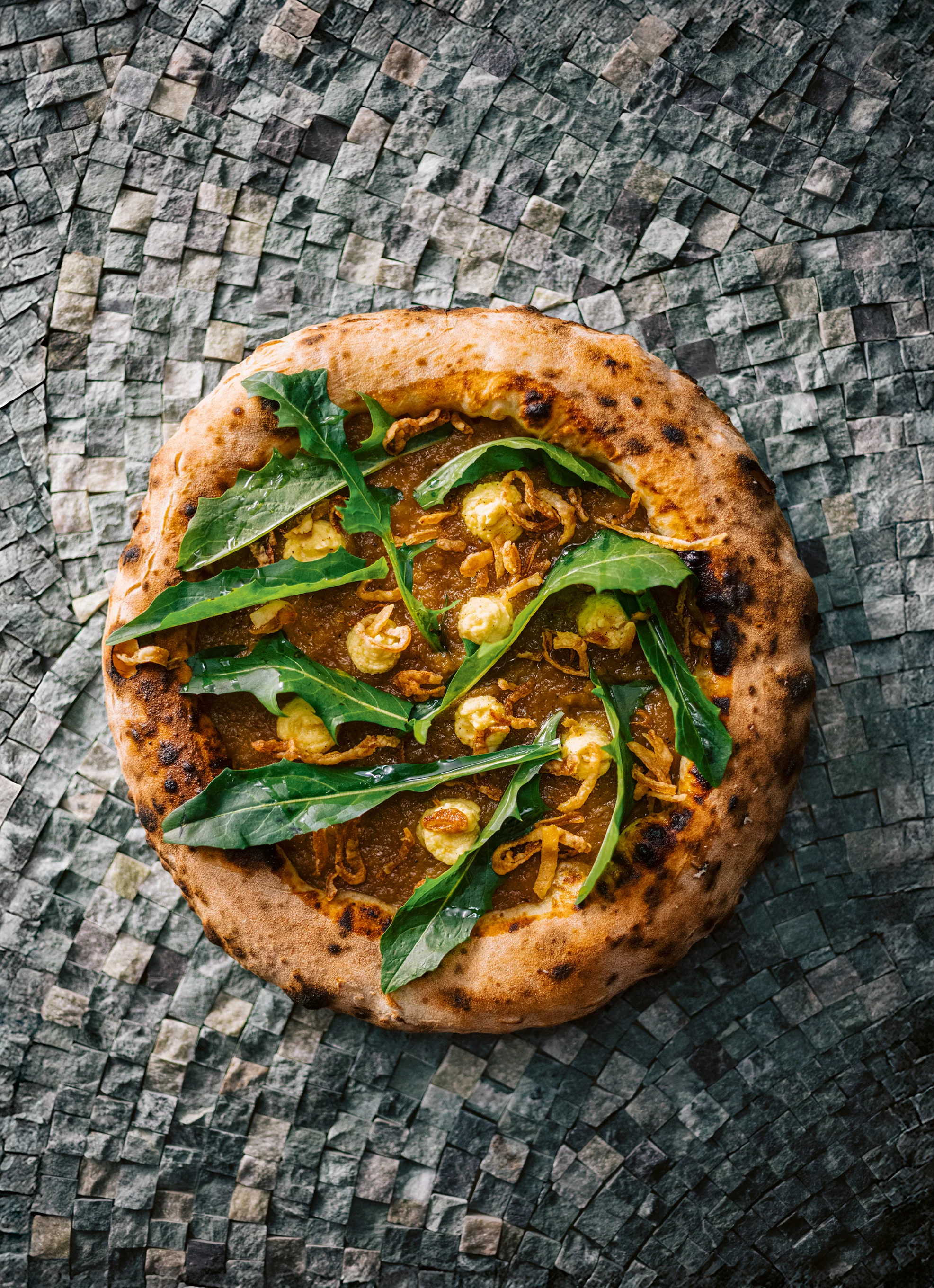 Memento. Photography: Adam Bricker and Brian McGinn
Memento. Photography: Adam Bricker and Brian McGinn
PIZZA RECIPE – MEMENTO
Ingredients for one pizza
10oz / 280g Pizza dough → see the book for the exact recipe and method but for the purposes of this (in brief) recipe, assume store bought.
2tsp Extra virgin olive oil plus extra for dressing
1/3oz / 10g Alife onion, julienned
5oz / 150g Alife onion purée
2oz / 60g Caiatini chickpea cream
1 1/2oz / 40g Wild chicory
Black pepper to taste
Heat the 2 teaspoons of oil in a pan to 355 degrees F / 180 degrees C. Pat the julienned onion strips dry with paper towel, and fry in the oil for 2 minutes.
On the work surface, stretch the dough into a disk, leaving a uniform crust around the entire circumference.
Spread the pizza with the onion purée and bake for 1 minute 30 seconds–2 minutes at 790–840 degrees F / 420–450 degrees C.
Once cooked, slice the pizza and top each slice with chickpea cream followed by wild chicory dressed with oil, the crunchy fried onions, and seasoned with pepper.
Ingredients for the Alife onion purée
2 3/4fl oz / 80ml Extra virgin olive oil
14oz / 400g Alife onions, peeled and minced
1tsp / 5g Fine salt
Ingredients for the Caiatini chickpea cream
10oz / 300g Dried Caiatini chickpeas
1 Bay leaf
2 cloves Garlic
Fine salt to taste
3tsp Extra virgin olive oil
Alife Onion Purée
To make the onion purée, heat the oil in a large saucepan and add the onions. Saut. the onions until soft and until all the liquid they release has evaporated. Then add a glass of water (about 6fl oz / 180ml) and let cook over low heat. Once the water has evaporated and the onion is cooked, remove from the heat and purée with a stick blender. Season with the salt and leave to cool before using on the pizza. The remainder will keep in the refrigerator for 2–3 days.
Caiatini Chickpea Cream
For the chickpea cream, soak the chickpeas in water overnight. On the day of cooking, fill a saucepan with water, add the bay leaf and garlic, and salt the water. Then add the soaked chickpeas and cook for 2 hours. Drain the chickpeas, removing the bay leaf and garlic, and blend in a blender, gradually adding the oil. The remainder will keep in the refrigerator for 2–3 days.

